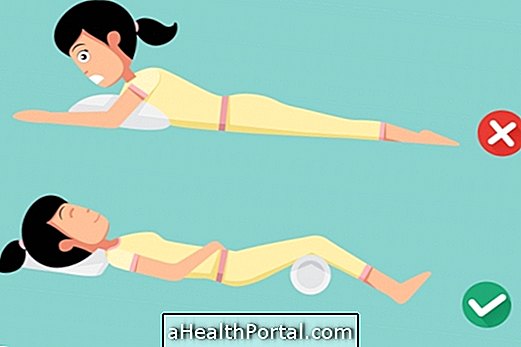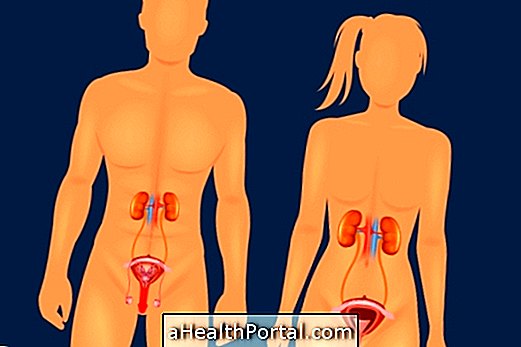The mouth breather syndrome arises when the respiration through the nose is replaced, in great majority, by the mouth breathing. This change may occur due to a respiratory tract problem, such as deviated nasal septum, polyps or airway obstruction, or incorrect posture developed without a specific cause.
Although breathing through the mouth does not endanger life as it continues to allow air to enter the lungs, this habit over the years can cause minor changes in the anatomy of the face, especially in the positioning of the tongue, lips and head. In addition, there is still a greater risk of infections such as colds, flu or sinusitis, since the nose is no longer filtering the inspired air.
In this way, mouth breathing syndrome should be identified as early as possible, especially in children, so that the habit is broken and facial changes do not occur.

How to identify the syndrome
A person with mouth breathers syndrome can usually be identified from some signs or symptoms such as:
- Lips often apart;
- Excessive accumulation of saliva;
- Dry and persistent cough;
- Dry mouth and bad breath;
- Narrow, elongated face.
In addition, it is also common for the person who suffers from mouth breathing syndrome to take many breaks while eating to allow breathing.
In children, other signs of alarm may appear, such as slower-than-normal growth, constant irritability, problems concentrating at school, and difficulty sleeping at night.
How is the diagnosis made?
There is no test or examination to diagnose mouth breathing syndrome, so it is very important to consult an otolaryngologist or pediatrician in the case of the child to assess the symptoms and identify the problem. In some cases, the doctor may ask several questions about sleep patterns or frequency of infections to try to find out the cause.
In other cases, the syndrome can only be discovered when the otorhino identifies a change in the airways that prevents the person from breathing normally, for example.
What can cause the syndrome
The mouth breather syndrome is usually caused by an obstruction in the airways that hinders the passage of air. Some examples are:
- Tonsils and adenoids larger than normal;
- Deviation of the nasal septum;
- Nasal polyps;
- Tumors.
In addition, people with changes in the shape of the nose or jaw are also more likely to breathe through the mouth and develop this type of syndrome.
In other cases, the syndrome can arise due to only the habit of breathing through the mouth, which happens more often in people who suffer with excessive stress or anxiety, and there is no need to have a respiratory problem.
How is the treatment done?
To treat mouth breather syndrome it is necessary to eliminate its cause. So if it is an influenza, cold or allergy, the doctor may prescribe antihistamine or nasal decongestants in order to improve the passage of air through the nose.
However, if the syndrome is being caused by changes in the airways, such as deviated septum or swollen tonsils, surgery may be needed to correct the problem and allow air to flow back through the nose.
In cases where the person breathes through the mouth due to a habit, it is necessary to identify if this habit is being caused by stress or anxiety, and if it is recommended to consult a psychologist or participate in relaxing activities such as yoga, the tension while helping to train the breath.

























